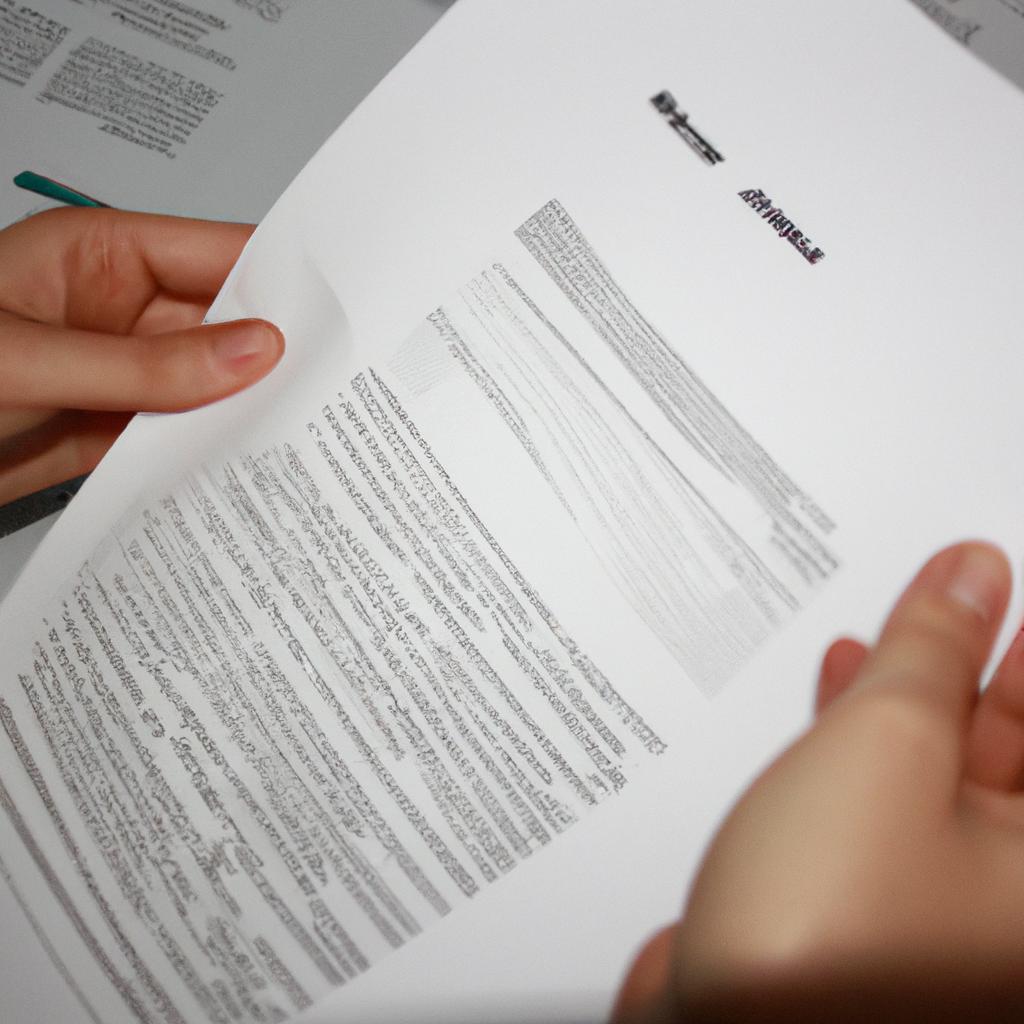Joint Pain in Body Myositis: An Informative Overview of Autoimmune Myositis

Joint pain is a common symptom experienced by individuals with autoimmune myositis, a group of inflammatory muscle diseases characterized by chronic muscle weakness and inflammation. This debilitating condition affects the muscles and can lead to significant impairment in daily activities. For instance, consider the case of Mr. Johnson, a 45-year-old man diagnosed with polymyositis, one of the subtypes of autoimmune myositis. He began experiencing persistent joint pain in his knees and wrists along with muscle weakness, ultimately hindering his ability to walk or perform simple tasks such as opening jars or holding objects. This article aims to provide an informative overview of joint pain in body myositis, discussing its causes, symptoms, diagnosis approaches, and potential treatment options.
Understanding the underlying mechanisms causing joint pain in autoimmune myositis is crucial for effective management of this symptom. Although joint involvement may not be apparent initially, it often becomes evident as the disease progresses. The exact cause of joint pain in body myositis remains elusive; however, several factors contribute to its development. These include ongoing immune system activation leading to systemic inflammation within joints and adjacent tissues, direct infiltration of inflammatory cells into the synovial membrane surrounding the joints, and secondary effects due to muscle weakness resulting in altered g joint mechanics and increased stress on the joints.
Symptoms of joint pain in autoimmune myositis can vary in intensity and location. Commonly affected joints include the knees, wrists, elbows, and ankles. The pain is often described as a dull ache or stiffness that worsens with movement or prolonged activity. Swelling and tenderness may also be present in the affected joints.
To diagnose joint involvement in autoimmune myositis, healthcare professionals may perform a thorough physical examination, review medical history, and order additional tests. These tests may include blood work to assess markers of inflammation such as C-reactive protein (CRP) and erythrocyte sedimentation rate (ESR). Imaging studies like X-rays, ultrasounds, or MRI scans can help identify any structural changes or joint damage. In some cases, a synovial fluid analysis may be done to rule out other causes of joint pain.
Treatment options for joint pain in autoimmune myositis aim to reduce inflammation, manage pain, and improve joint function. Nonsteroidal anti-inflammatory drugs (NSAIDs), such as ibuprofen or naproxen, are commonly prescribed to alleviate pain and reduce inflammation. Immunosuppressive medications like corticosteroids or disease-modifying antirheumatic drugs (DMARDs) may be recommended to control the underlying inflammatory response.
Physical therapy plays a crucial role in managing joint pain by improving muscle strength and flexibility while reducing stress on the joints. Assistive devices like braces or splints may be suggested to provide support and stability to affected joints during activities.
In severe cases where conservative measures fail to provide relief, surgical intervention might be considered. Joint replacement surgery may be necessary if there is significant joint damage or deterioration.
As always, it is essential for individuals experiencing joint pain associated with autoimmune myositis to consult with their healthcare provider for an accurate diagnosis and appropriate treatment plan tailored to their specific needs.
Understanding the Causes of Joint Pain in Myositis
Joint pain is a common symptom experienced by individuals with autoimmune myositis, a group of inflammatory muscle diseases characterized by chronic muscle weakness and inflammation. To shed light on this debilitating aspect of the condition, let us consider an illustrative example: imagine a middle-aged woman named Sarah who has been diagnosed with dermatomyositis, a specific subtype of myositis. Despite receiving treatment for her muscle weakness, she continues to experience persistent joint pain that significantly impacts her daily activities.
There are several factors contributing to joint pain in myositis. Firstly, the immune system’s malfunctioning plays a crucial role. In autoimmune myositis, the body’s immune cells mistakenly attack healthy tissues such as muscles and joints instead of foreign invaders. This inappropriate immune response leads to chronic inflammation within the affected joints, resulting in pain and discomfort for individuals like Sarah.
Furthermore, certain biological mechanisms exacerbate joint pain in myositis patients. One significant factor is the release of pro-inflammatory molecules called cytokines into the bloodstream. These cytokines promote ongoing inflammation in the joints and contribute to heightened sensitivity to pain. Additionally, autoantibodies produced by the faulty immune system can directly target components of joint tissue, further aggravating symptoms.
To better understand the impact of joint involvement in myositis, we present below a bullet point list highlighting some emotional challenges faced by those experiencing chronic joint pain:
- Limitations in performing daily activities due to reduced mobility
- Persistent discomfort leading to decreased quality of life
- Emotional distress caused by constant pain and its impact on social interactions
- Increased dependency on others for assistance with tasks previously performed independently
Additionally, we have compiled a table outlining four key aspects related to joint pain in myositis:
| Aspect | Impact |
|---|---|
| Physical limitations | Reduced range of motion and difficulty moving |
| Psychological impact | Emotional distress and decreased well-being |
| Social interactions | Impaired ability to participate in social events |
| Quality of life | Decreased overall satisfaction and happiness |
In light of these challenges, it becomes evident that joint pain is a significant burden for individuals living with myositis. As we delve further into this discussion, the subsequent section will focus on exploring the signs and symptoms associated with joint involvement in myositis patients, shedding more light on the extent of its impact on their lives.
Signs and Symptoms of Joint Involvement in Myositis
Autoimmune myositis is a complex disorder that involves inflammation of the muscles and can often lead to joint pain. The exact cause of joint involvement in myositis is not fully understood, but several factors have been identified as potential contributors. One such factor is the immune system’s response to specific proteins found within the joints. For example, research has shown that in certain cases of autoimmune myositis, antibodies target components of the synovial membrane, leading to joint inflammation.
To provide a clearer understanding, let us consider a hypothetical case study involving a patient with autoimmune myositis experiencing joint pain. This individual presents with persistent discomfort and swelling primarily affecting their knees and wrists. Through further investigation, it is revealed that this patient has elevated levels of antibodies targeting collagen II and hyaluronic acid – two key components found within healthy joint tissues.
The association between autoantibodies and joint inflammation highlights some possible mechanisms underlying joint pain in myositis patients:
- Autoantibody-mediated damage: Antibodies specifically targeting components of the synovial membrane or other structures within joints can trigger an inflammatory response.
- Immune complex formation: The deposition of immune complexes in the joints can activate an immune response, leading to tissue damage and subsequent pain.
- Cytokine dysregulation: Abnormal production of pro-inflammatory cytokines by immune cells may contribute to chronic inflammation and joint symptoms.
- Shared genetic susceptibility: Certain gene variants associated with autoimmune diseases are also implicated in both muscle and joint involvement in myositis.
This information serves as an important starting point for understanding how joint pain arises in individuals with myositis. By identifying these potential causes, healthcare professionals can better tailor treatment strategies to alleviate discomfort and improve quality of life for affected individuals.
Moving forward into our next section on “Diagnosing Joint Pain in Myositis,” we will explore the various approaches and tests used by medical professionals to accurately evaluate joint involvement in individuals with myositis. By understanding the diagnostic process, patients can gain a clearer perspective on their condition and work collaboratively with healthcare providers towards effective management strategies.
Diagnosing Joint Pain in Myositis
Picture this scenario: John, a 45-year-old man, has been experiencing muscle weakness and fatigue for several months. Lately, he noticed that his joints have become increasingly painful and stiff as well. As we delve deeper into the signs and symptoms of joint involvement in myositis, it becomes evident that understanding these manifestations is crucial for accurate diagnosis and effective treatment.
The Complexity of Joint Involvement
Joint pain in myositis can present differently depending on the underlying condition. While some individuals may experience mild discomfort or limited range of motion, others may encounter severe pain and inflammation that significantly impacts their daily activities. To grasp the intricacies of joint involvement in myositis, let us explore its key characteristics:
- Polyarthralgia: Many patients with myositis report pain involving multiple joints throughout their body.
- Morning Stiffness: Upon awakening, individuals often experience stiffness in their affected joints that gradually improves over time.
- Symmetrical Distribution: Joint pain tends to affect both sides of the body symmetrically, commonly involving areas such as the wrists, knees, elbows, and ankles.
- Swelling and Warmth: Some patients may notice swelling and warmth around their affected joints due to inflammation.
To better visualize these aspects, consider the following table showcasing common joint manifestations observed in different types of myositis:
| Type of Myositis | Commonly Affected Joints |
|---|---|
| Polymyositis | Shoulders |
| Dermatomyositis | Hands |
| Inclusion Body Myositis | Knees |
It is essential to recognize these patterns when diagnosing joint pain associated with myositis since they aid clinicians in determining appropriate management strategies tailored to each patient’s unique needs.
Diagnostic Considerations
When evaluating joint pain in the context of myositis, healthcare professionals must consider several factors to arrive at an accurate diagnosis. These considerations may include:
- Clinical History: Assessing the patient’s medical history is crucial to identify any pre-existing conditions or potential triggers for joint involvement.
- Physical Examination: A thorough examination allows clinicians to assess joint tenderness, swelling, and range of motion limitations.
- Laboratory Tests: Blood tests can help detect markers of inflammation, such as elevated levels of C-reactive protein (CRP) and erythrocyte sedimentation rate (ESR).
- Imaging Studies: X-rays, magnetic resonance imaging (MRI), or ultrasound examinations may reveal signs of joint damage or inflammation.
By meticulously analyzing these diagnostic aspects, healthcare providers can establish a definitive diagnosis that guides subsequent treatment decisions.
This comprehensive understanding of joint pain in myositis lays the groundwork for effective management strategies tailored specifically to each patient.
Continue reading: Treatment Options for Joint Pain in Myositis
Treatment Options for Joint Pain in Myositis
In order to effectively treat joint pain associated with myositis, it is crucial to accurately diagnose the condition. This section will explore the diagnostic process for identifying joint pain in myositis patients.
One example of a patient presenting with joint pain in myositis is Sarah, a 45-year-old woman who had been experiencing persistent pain and swelling in her wrists and knees for several months. Her symptoms were accompanied by muscle weakness and fatigue. Upon physical examination, her healthcare provider noticed tenderness and limited range of motion in her affected joints. Blood tests revealed elevated levels of certain autoantibodies associated with autoimmune myositis, confirming the diagnosis.
When diagnosing joint pain in myositis patients, healthcare professionals employ various diagnostic methods including:
- Medical history assessment: Gathering information about the patient’s medical history can provide valuable insights into potential underlying causes of their joint pain.
- Physical examination: Conducting a thorough physical examination allows healthcare providers to assess the extent of joint involvement and identify any specific patterns indicative of myopathic conditions.
- Laboratory testing: Blood work plays a crucial role in diagnosing myositis-related joint pain as it helps detect abnormal levels of inflammatory markers or autoantibodies often seen in these cases.
- Imaging studies: X-rays, magnetic resonance imaging (MRI), or ultrasound may be utilized to visualize structural changes within affected joints and rule out other possible causes of joint pain.
To further illustrate the diagnostic journey, here is an emotional bullet point list highlighting key challenges faced by individuals seeking answers for their joint pain:
- Frustration caused by delayed diagnosis due to overlapping symptoms between different rheumatic diseases
- Anxiety arising from uncertainty regarding prognosis and long-term effects on daily life
- Relief experienced upon receiving a proper diagnosis after an extended period of confusion
- Empowerment gained through understanding treatment options available for managing joint pain
Additionally, we present a table below, summarizing the diagnostic methods discussed above:
| Diagnostic Method | Purpose |
|---|---|
| Medical history | Identify potential underlying causes |
| Physical examination | Assess joint involvement and myopathic patterns |
| Laboratory testing | Detect abnormal levels of inflammatory markers |
| Imaging studies | Visualize structural changes within affected joints |
By accurately diagnosing joint pain in myositis patients through comprehensive evaluation, healthcare professionals can provide appropriate treatment strategies tailored to each individual’s unique needs.
Managing Joint Pain Through Lifestyle Changes
As joint pain is a common symptom of myositis, it is crucial for individuals with this condition to take proactive measures to prevent further damage. One hypothetical example illustrates the importance of managing joint pain effectively. Let’s consider a fictional patient named Sarah who was diagnosed with autoimmune myositis and experienced severe joint pain in her knees.
To address joint pain in myositis, several lifestyle changes can be implemented:
- Maintaining a healthy weight: Excess body weight puts additional stress on joints, exacerbating discomfort and inflammation. By adopting a balanced diet and engaging in regular exercise, patients can reduce strain on their joints.
- Practicing proper posture: Maintaining good posture while sitting or standing helps distribute weight evenly across joints, minimizing pressure and reducing the likelihood of joint pain.
- Using assistive devices: Employing tools such as braces or splints can support weakened muscles and relieve some burden from affected joints.
- Engaging in low-impact exercises: Activities like swimming or cycling are gentle on the joints but still promote strength, flexibility, and cardiovascular health without causing excessive strain.
Table: Tips for Managing Joint Pain
| Lifestyle Changes | Benefits |
|---|---|
| Maintain a healthy weight | Reduces stress on joints |
| Practice proper posture | Distributes weight evenly across joints |
| Use assistive devices | Supports weakened muscles and reduces pressure on affected joints |
| Engage in low-impact exercises | Promotes fitness without placing excessive strain on the joints |
Implementing these strategies not only aids in alleviating immediate symptoms but also contributes to long-term joint health. By incorporating these practices into daily routines, individuals with myositis can minimize further damage to their joints and enhance overall well-being.
Transitioning smoothly into the subsequent section about “Preventing Joint Damage in Myositis,” it is important to take proactive measures to protect joints from long-term harm.
Preventing Joint Damage in Myositis
In order to alleviate joint pain associated with body myositis, it is crucial for individuals to adopt certain lifestyle changes. These modifications can help minimize discomfort and promote overall well-being. For instance, let’s consider the case of Sarah, a 45-year-old patient diagnosed with autoimmune myositis.
Firstly, Sarah has found great relief in incorporating regular exercise into her routine. Low-impact activities like swimming and yoga have proven particularly beneficial for managing her joint pain. Engaging in these exercises not only helps strengthen muscles surrounding the affected joints but also enhances flexibility and range of motion. Furthermore, Sarah has noticed that maintaining a healthy weight through proper nutrition aids in reducing stress on her joints.
Additionally, making dietary adjustments plays an important role in mitigating joint pain caused by myositis. Consuming foods rich in omega-3 fatty acids such as salmon or walnuts has been shown to possess anti-inflammatory properties which can help alleviate symptoms. Moreover, adding turmeric to meals or taking curcumin supplements may provide further relief due to its potential anti-inflammatory effects.
To effectively manage joint pain associated with myositis, it is essential to implement self-care practices as part of one’s daily routine:
- Practicing stress reduction techniques (e.g., meditation or deep breathing exercises) can help minimize muscle tension and subsequently relieve joint discomfort.
- Applying heat or cold therapy directly to affected areas can offer temporary relief from inflammation and soreness.
- Adequate rest and sleep are vital for allowing the body sufficient time to heal and recover from physical activity.
Table: Common Lifestyle Modifications for Managing Joint Pain
| Modification | Description |
|---|---|
| Regular Exercise | Engage in low-impact activities like swimming or yoga |
| Healthy Weight | Maintain appropriate body weight through balanced nutrition |
| Omega-3 Fatty Acids | Consume foods high in omega-3 fatty acids or take supplements |
| Stress Reduction Techniques | Utilize meditation, deep breathing exercises, or other stress-reducing methods |
By implementing these lifestyle changes and incorporating self-care practices into daily routines, individuals like Sarah can effectively manage joint pain associated with body myositis. It is important to consult a healthcare professional for personalized guidance in order to optimize the effectiveness of these modifications. Ultimately, taking proactive steps towards managing joint pain can greatly improve the quality of life for those living with autoimmune myositis.





